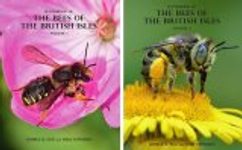About this book
The superfamily Chalcidoidea (the jewel wasps) are part of the insect order Hymenoptera. The superfamily comprises more than 27,000 known species, with an estimated total diversity of more than 500,000 species, meaning that the vast majority have yet to be discovered and described. Most of the species are parasitoids, attacking the egg, larval stage or pupal stage of their host, though many other life cycles are known including gall associates and fig pollinators.
This landmark volume has been co-authored by world authorities on the systematics and biology of chalcidoid wasps. It provides an introduction to the superfamily, a review of chalcidoid morphology, an overview of the fossil record, a phylogenetic framework for the revised classification of the superfamily, an identification key for the 50 recognized families, and detailed treatments of the individual families.
The book consolidates much recent research on the phylogenomics of Chalcidoidea and the fossil record. This research has resulted in substantial changes to their classification, and in a review of all families, the new family groups are presented to the general scientific public for the first time. The book is a historic milestone, presenting a reclassification of the superfamily and a synthesis of knowledge on all aspects of Chalcidoidea that will serve for generations to come.
Individual chapters clarify the limits of families and subfamilies based on contemporary phylogenetic studies. These chapters provide for each family: diagnostic features and extensively illustrated details of their specialized morphology, summaries of their distribution and worldwide diversity, a history of their classification history and major workers, phylogenetic relationships, natural history, use in biological control and economic impact, fossil history, and fully illustrated identification keys to subfamilies or in some cases to genera.
Additional chapters present best practices for collecting, rearing from hosts, and preservation, review digital resources currently available, and explore the diversity of their natural history and their human impacts, such as their use and importance to biological and natural control of pest arthropods. Chapters by worldwide authorities explore the enormous biological diversity of chalcidoid wasps including the consequences of their almost unbelievable miniaturization (the most extreme known in insects), relationships with endosymbionts, special aspects of genetics, genomics, evolutionary biology and development, and brief accounts of the most significant chalcidoid researchers that have passed.
For many years to come this important book will serve the needs of hymenopterists and professional entomologists, taxonomists and systematists, entomologists working on parasitic wasps as biological control agents, and ecologists working on parasite-host interactions.
Contents
1. Introduction
2. Classification and phylogenetic relationships of Chalcidoidea
3. Fossils and evolutionary history of Chalcidoidea
4. Natural history of Chalcidoidea
5. External morphology of adult Chalcidoidea
6. Immature stages of Chalcidoidea
7. Key to families of Chalcidoidea
8. Agaonidae
9. Aphelinidae
10. Azotidae
11. Baeomorphidae
12. Boucekiidae
13. Calesidae
14. Ceidae
15. Cerocephalidae
16. Chalcedectidae
17. Chalcididae
18. Chrysolampidae
19. Cleonymidae
20. Coelocybidae
21. Cynipencyrtidae
22. Diparidae
23. Diversinitidae
24. Encyrtidae
25. Epichrysomallidae
26. Eucharitidae
27. Eulophidae
28. Eunotidae
29. Eupelmidae
30. Eurytomidae
31. Eutrichosomatidae
32. Herbertiidae
33. Hetreulophidae
34. Heydeniidae
35. Idioporidae
36. Leptoomidae
37. Leucospidae
38. Lyciscidae
39. Macromesidae
40. Megastigmidae
41. Melanosomellidae
42. Metapelmatidae
43. Moranilidae
44. Mymaridae
45. Neanastatidae
46. Neodiparidae
47. Ooderidae
48. Ormyridae
49. Pelecinellidae
50. Perilampidae
51. Pirenidae
52. Protoitidae
53. Pteromalidae
54. Signiphoridae
55. Spalangiidae
56. Systasidae
57. Tanaostigmatidae
58. Tetracampidae
59. Torymidae
60. Trichogrammatidae
61. Incertae Sedis taxa
62. Collecting, curation and rearing of Chalcidoidea
63. The role of Chalcidoidea in biocontrol
64. The smallest in the small: Symbionts in Chalcidoidea
65. Miniaturization in Chalcidoidea
66. Genetics and genomics of Chalcidoidea
67. Speciation in Chalcidoidea
68. Chalcidoidea as hyperparasitoids
69. Morphometric methods for species recognition
70. Historical workers on the Chalcidoidea
Customer Reviews
Biography
John Heraty is a Professor of Entomology in the Department of Entomology at the University of California, Riverside, USA. Jim Woolley is a Professor Emeritus at Texas A&M University, USA


































